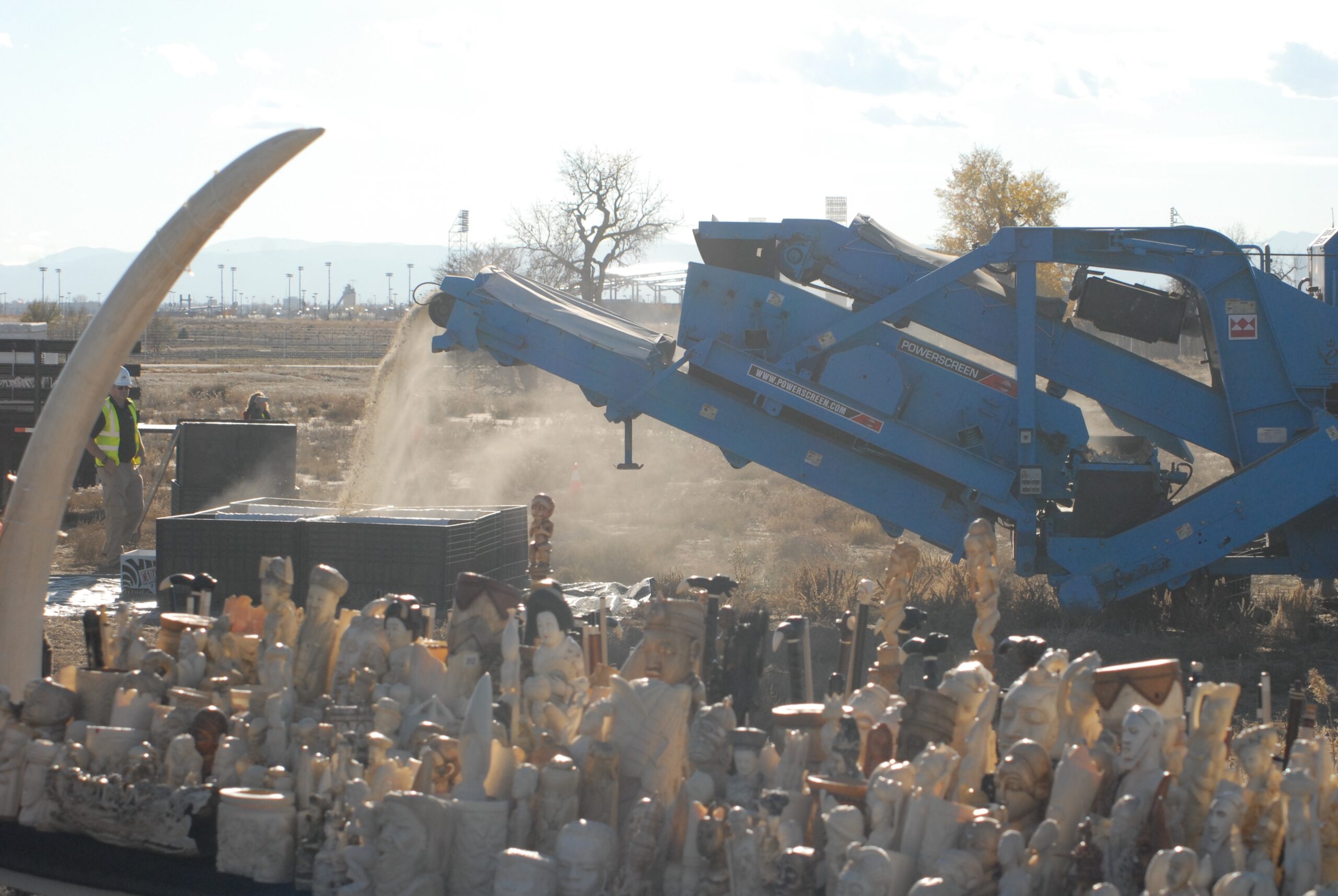The U.S. Fish and Wildlife Service (USFWS) is about to destroy 6 tons of confiscated ivory being held in Denver — ostensibly to help the campaign against the illegal killing of elephants. By so doing, it is following the lead taken by Kenya in 1989 and more recently by several other African and Asian countries.
But does the destruction of stockpiles really help the cause? In 1989, Kenya’s dramatic ivory burn seemed to have the desired effect. It raised global awareness, helped bring about an international ivory trade ban, and attracted substantial donations to Kenyan conservation efforts.
During the last decade, however, Asian demand for ivory has grown and continues to do so with rising affluence. Consumer surveys show that demand is currently widespread and not always concerned about ethical issues related to the source of supply.
The trade ban approach is also not supported by several southern African countries, which typically better manage their elephant populations and are eager to sell ivory stocks accumulated from natural mortality to raise funds for elephant conservation.
To appease these countries, the world’s governments agreed to relax the trade ban to allow two one-off state-to-state sales in 2000 and 2008. The impact of these sales is disputed: Some argue that the second sale re-established demand for ivory in China. Others counter that illegal markets for ivory were already growing at that time, that the legal sales are tightly controlled, and that the amounts concerned are a fraction of the illegal volumes.
Either way, the beneficiaries of the one-off sales appear to have been intermediary buying cartels, not elephants. A Chinese cartel was able to pay bottom dollar to elephant range states and subsequently mete out the acquired stocks onto the Chinese retail market at greatly marked up prices. This does not benefit conservation. Whereas African range states seek high selling prices to obtain sufficient funds to re-invest into much-needed field protection efforts, inflated end-user prices may stimulate competition from illegal suppliers.
One-off sales through cartels may not be a good idea, but that does not mean that stockpile destruction is any better. The initial success following Kenya’s 1989 ivory burn is not replicable under current conditions, as the ban is already in place and being flouted by the current market. The main effect of stockpile destruction is simply to reduce the potential supply of ivory in the global market (the amount to be destroyed by the USFWS is roughly equivalent to a year’s legal sales in China).
Fish and Wildlife officials seem to think that destroying the stockpile will send out a message to the market, garner support for elephant conservation, and deter poachers. But this assumed cause-and-effect relationship is not at all clear or even valid: The message sent to existing illegal suppliers and consumers may in fact be perverse.
Economists argue that if you are trying to protect an endangered species, then limiting the supply of its products can be counterproductive. If demand remains unchanged, supply reduction simply raises perceptions of scarcity and drives up prices. This effect may be accentuated in East Asian cultures where possession of rare and illegal items is often seen as prestigious and where some may speculatively invest for potential commercial extinction. The net result is increased rewards to poachers and intensified poaching effort.
We know that destroying stockpiles reduces supply, but not necessarily demand. The ill-conceived USFWS gesture could create the perception that ivory is an increasingly scarce commodity on illegal markets, leading to higher prices and further poaching. It may simply place a higher price on the head of dead elephants while doing nothing to raise their value alive in the eyes of people who have to live with them and who bear the costs of protection.
Michael ‘t Sas-Rolfes is a conservation economist based in South Africa and a research fellow at the Property and Environment Research Center (PERC). This article originally appeared in the Denver Post.
Related articles:




